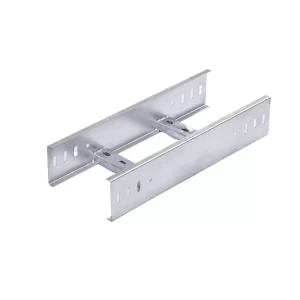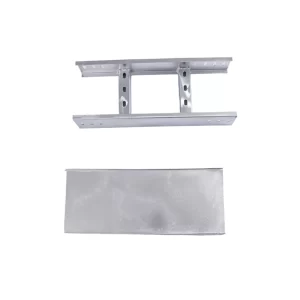A cable ladder, often referred to as a cable tray or cable rack, is a highly versatile and efficient system designed to support and manage electrical cables and wiring in various commercial, industrial, and residential settings. Its primary function is to provide a safe, organized, and accessible pathway for cables, which can range from simple data lines to high-voltage power cables. Cable ladders play a crucial role in the infrastructure of buildings, data centers, factories, and other facilities where large numbers of cables need to be installed, maintained, and protected.

Design and Construction
Cable ladders are typically fabricated from metal, most commonly steel, although aluminum and stainless steel versions are also available for environments requiring corrosion resistance or lighter weight options. The basic structure consists of rungs that are spaced at regular intervals along two parallel side rails. This open design allows for easy access to the cables, facilitates air circulation, and reduces the risk of fire by minimizing the amount of combustible material enclosed within the system.
Applications
1. Data Centers and Server Rooms
In these environments, cable ladders are essential for managing the vast network of data cables required for server connectivity. They help in organizing and routing cables between servers, switches, routers, and storage devices, ensuring optimal performance and ease of maintenance.
2. Industrial Facilities
Factories, power plants, and manufacturing sites heavily rely on cable ladders to support the complex wiring systems needed for machinery control, power distribution, and safety systems. The robust construction of cable ladders ensures they can withstand harsh conditions and heavy loads.
3. Commercial Buildings
Office complexes, hospitals, schools, and retail spaces use cable ladders to route lighting, HVAC, and security systems wiring. This helps maintain a clean aesthetic while ensuring that all necessary systems are connected and functional.
4. Residential Complexes
In multi-unit residential buildings, cable ladders are used to manage the distribution of utilities such as electricity, water, and telecommunications services to individual units.
5. Outdoor Installations
Cable ladders can also be found outdoors, supporting cables in applications like street lighting, traffic signals, and utility substations. They are designed to withstand environmental elements and can be customized with additional coatings for enhanced protection.

Benefits
Safety: Cable ladders reduce tripping hazards and prevent damage to cables from being stepped on or crushed.
Flexibility: They can be easily reconfigured or expanded as needs change, making them ideal for evolving infrastructures.
Cost-Effective: Compared to conduit systems, cable ladders offer lower installation costs due to their open design and easier cable management.
Maintenance: Accessing and replacing cables is straightforward, minimizing downtime during maintenance operations.
Scalability: They can accommodate a wide range of cable sizes and quantities, making them suitable for both small installations and large-scale projects.
In summary, cable ladders are indispensable components of modern electrical and data infrastructure. Their design, durability, and adaptability make them a preferred choice for managing and protecting cables in diverse applications. Whether it’s in the tight confines of a data center or the expansive spaces of an industrial facility, cable ladders ensure that critical systems remain operational, efficient, and safe.

